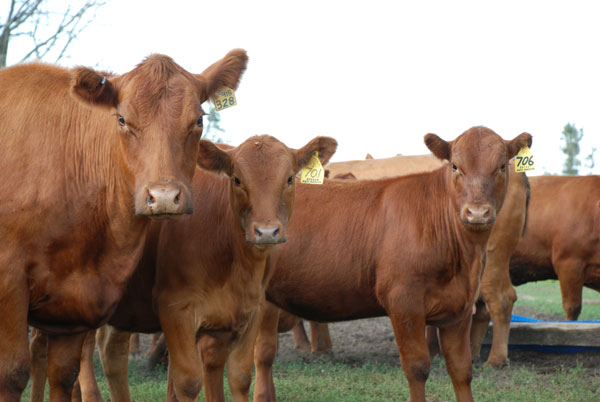Cattle Numbers Must Increase To Maintain Infrastructure
Unless the beef cow herd begins to expand, more infrastructure will exit the business, leading to few cows yet and so on.
February 8, 2014

“The beef cowherd must expand in the next 1-4 years,” says Randy Blach, CattleFax CEO. “If it doesn’t, don’t kid yourself; we’ll have a smaller industry and move beef from the center of the plate to more of a specialty item.”
So goes the other side of receiving high prices because of historically snug cattle numbers.
During this week’s CattleFax Outlook seminar in Nashville, Kevin Good, CattleFax senior markets analyst, explained the nation’s beef cowherd decreased 2.3 million head between 2010 and 2013.
“The Jan. 1 cattle inventories for all cattle as well as beef cows can be the lows from which the industry rebuilds over the next several years,” says Derrell Peel, Oklahoma State University Extension livestock marketing specialist, in his weekly comments. “However, the industry is quite vulnerable to drought conditions that could re-intensify this spring and postpone herd expansion once again. Market signals for expansion are strong and growing, and the industry is poised to respond. We know what we want to do; we just don’t know what Mother Nature is going to let us do.”
Subscribe now to Cow-Calf Weekly to get the latest industry research and information in your inbox every Friday!
Peel points out, based on USDA’s Cattle report, five of the 10 largest beef-cow states increased cow inventory last year, while five lost inventory. “The largest decrease in cow numbers occurred in Texas, followed by South Dakota, Montana, Kentucky and Nebraska,” Peel notes. “Beef cow numbers increased in Kansas, Missouri, Oklahoma, Arkansas and North Dakota. On net, there was a slight increase in beef cow numbers in the top 10 beef cow states.”
Peel also explains that the inventory of beef replacement heifers was up 1.7%, a touch smaller than expectations. But he says the number of beef replacement heifers, as a percentage of the beef cowherd, at 18.8%, is the largest in more than 20 years, including the last cyclical expansion in the early 1990s.
“Any increase in beef cow numbers is expected to remain modest in 2014 for at least three reasons,” says Chris Hurt, Purdue University, Extension agricultural economist, in his recent market analysis. “The cost to retain heifers is very high; cow-calf producers had a long period of narrow margins, and they want a longer period of strong margins to build their confidence to take on the market uncertainties; drought/dryness still covers substantial areas of brood cow production areas.”
As precipitation returns to more normal levels for the 2014 growing season, CattleFax predicts farmers in the U.S. should grow an adequate corn crop to build the carry-over supply. The improved corn supplies should assure lower corn/input costs over the next 12-24 months, says CattleFax grain market analyst Mike Murphy.
“The lower input cost will have a direct correlation to improved feeder cattle and calf values in 2014; and with continued help from Mother Nature, we will be in better shape with regard to hay supply and prices moving forward,” Murphy says.
You might also like:
60+ Photos From 2014 Cattle Industry Convention
CattleFax Outlook: Better Weather & Higher Prices In 2014
Know Which Cows Are Most At Risk To Predators
10 New Farm Trucks To Consider For 2014
About the Author(s)
You May Also Like




.png?width=300&auto=webp&quality=80&disable=upscale)
